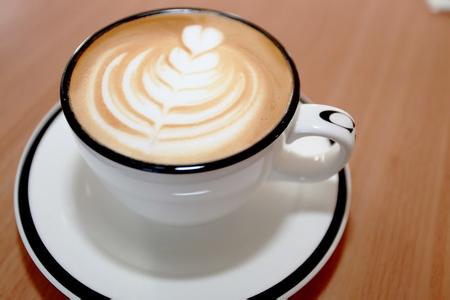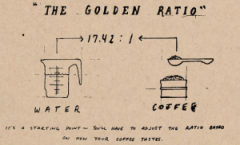The skill of making Coffee by hand and the process of making individual Coffee

1. Fold the size-matched filter paper and place it on the filter bracket, which is placed on a cup with moderate capacity to hold the coffee liquid. In order to clearly see the state of coffee liquid ticking, the cup had better be made of transparent material.
2. Rinsing the filter paper with an appropriate amount of hot water can not only make the filter paper adhere smoothly to the filter bracket, but also wash away the fluorescent agent that may exist on the filter paper and the strong smell that people do not like today. therefore, it is a general trend to use metal filter mesh (such as Swiss gold) to replace traditional filter paper. In addition, this step also warms the following arms with warm cups.
3. Place an appropriate amount of ground coffee powder in the filter paper, lay it flat, and press a shallow groove in the middle of the spoon powder.
4. Pour an appropriate amount of hot water into the long-nosed pot. It should be noted that the temperature of the hot water poured into the pot should be 3 / 4 ℃ higher than that of the kettle in order to achieve the extraction water temperature we need. Hold the pot, slowly and evenly circle clockwise from the center and pour it layer by layer until the coffee is completely soaked.
5. Let the stew stand for 30 seconds. If handled properly, the wet coffee powder is as fluffy as fermentation (as lovely as a small steamed bread, which is also proof of the freshness of the coffee beans), but there is no large amount of coffee liquid flowing from below.
6. After stewing, hold the kettle to pour water again, or circle it clockwise, pour it in a circle from the inside (center point) to the outside, and then pour it clockwise from the outside to the center point when you get to the outer ring (be careful not to drench the outermost filter paper). This is a complete brewing, and under normal circumstances, the hot water in the pot will be used up. When the extraction process is over, remove the filter bracket together with the filter paper, and you can enjoy the coffee directly.
Coffee roasting degree is the most suitable: medium roasting-medium and deep roasting
Degree of grinding thickness: moderate fine grinding
Recommended water volume: 220g (using Hairo V60 filter cup, it is recommended to put it on a zero-clearing electronic filter to accurately grasp the amount of water injected)
Recommended amount of coffee powder: 13.5g
Extraction water temperature: 91-94 ℃ (96 ℃ before water injection)
As mentioned above, filter paper is used to explain the basic method of manual brewing (unbleached filter paper is recommended). In fact, a more pure and elegant method is to use flannel filter cloth instead of filter paper. If brewed properly, the taste will be purer and more layered. However, flannel filter cloth is troublesome to maintain. Be sure to clean it after each use, drain it, put it in a fresh bag, and then store it in the refrigerator. Next time you need to use it, take it out and rinse properly.
The filter bracket is the core of the manual brewing system, and if you look closely, it is not difficult to find:
First of all, there are several different materials to choose from, such as glass, resin, ceramic, metal and so on. Resin is the cheapest and ceramic has the best thermal insulation performance.
Secondly, the concave and convex grooves on the inner wall of the filter cup are quite knowledgeable, and the gap between the artificially formed filter paper and the inner wall of the filter cup facilitates air circulation and improves the extraction efficiency.
Finally, the holes under the traditional oval filter cup are single-hole, double-hole, three-hole and so on. We often call the single-hole filter cup (Melita Cup) the most difficult to operate, and those who need to brew have a more accurate grasp of the time of the water flow. It is not suitable for beginners. The step we introduced before is to take the three-hole filter cup most suitable for beginners as an example. The Japanese HARIO V60 series filter cup has to mention that under this conical filter cup is a relatively large diameter round hole, and the cup wall has spiral groove lines, this design has obvious advantages over the traditional filter cup-not only greatly increase the thickness of the coffee powder layer, facilitate water injection around the circle, but also improve the extraction balance of the first water injection stew, so that the coffee powder can all enjoy "rain and dew moisture". In addition, after the improvement of permeability, the passage of water and air flow is smoother, making the coffee taste more similar to flannel filter cloth, balanced and layered.
Important Notice :
前街咖啡 FrontStreet Coffee has moved to new addredd:
FrontStreet Coffee Address: 315,Donghua East Road,GuangZhou
Tel:020 38364473
- Prev

Coffee World anecdotes Coffee plates were originally used to cool coffee
1. Coffee spa in Japan the spa, located in Hakone, Japan, is a professional spa where customers can be bathed in a variety of pleasant sticky liquids, such as wine, chocolate, green tea and coffee. The ticket price for the coffee bath is 2800 yen, where visitors can pour coffee on themselves and then go to the opposite ramen bathroom in noodles.
- Next

Calculation of the ratio of Gold Powder to Water in Coffee extraction
In the study of cup testing or extraction of freshly baked coffee, barista flexibly changes different powder-to-water ratio and baking forms according to different coffee bean characteristics, mainly in order to restore or preserve the original natural flavor and characteristics of coffee. In the manual extraction skill teaching class, manual preferred quality products, coupled with the quality of fresh baking, promote the coffee class.
Related
- Detailed explanation of Jadeite planting Land in Panamanian Jadeite Manor introduction to the grading system of Jadeite competitive bidding, Red bid, Green bid and Rose Summer
- Story of Coffee planting in Brenka region of Costa Rica Stonehenge Manor anaerobic heavy honey treatment of flavor mouth
- What's on the barrel of Blue Mountain Coffee beans?
- Can American coffee also pull flowers? How to use hot American style to pull out a good-looking pattern?
- Can you make a cold extract with coffee beans? What is the right proportion for cold-extracted coffee formula?
- Indonesian PWN Gold Mandrine Coffee Origin Features Flavor How to Chong? Mandolin coffee is American.
- A brief introduction to the flavor characteristics of Brazilian yellow bourbon coffee beans
- What is the effect of different water quality on the flavor of cold-extracted coffee? What kind of water is best for brewing coffee?
- Why do you think of Rose Summer whenever you mention Panamanian coffee?
- Introduction to the characteristics of authentic blue mountain coffee bean producing areas? What is the CIB Coffee Authority in Jamaica?

